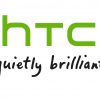 Sharp Corporation has developed a five-primary-color display that faithfully reproduces the real surface colors that humans are capable of perceiving. A prototype of this display will be exhibited at the international symposium of the Society for Information Display (SID) to be held in San Antonio, Texas, US from May 31 through June 5, 2009.
Sharp Corporation has developed a five-primary-color display that faithfully reproduces the real surface colors that humans are capable of perceiving. A prototype of this display will be exhibited at the international symposium of the Society for Information Display (SID) to be held in San Antonio, Texas, US from May 31 through June 5, 2009.
Demand for displays that can render colors in a manner faithful to the appearances of naturally occurring surface colors or designed colors is growing stronger in fields such as industrial design, digital archiving, network-based remote medical care, and electronic commerce. Thus various efforts to satisfy these requests are intensifying, prompting, for example, the development of natural vision technology*1.
This five-primary-color display comprises “Multi-Primary-Color Technology” that features special image processing circuitry, in addition to the display panel whose pixel structure is based on five-color filters that add the colors C (cyan) and Y (yellow) to the three colors of R (red), G (green), and B (blue). This combination expands the color gamut (range of reproducible colors) that can be rendered within the color spectrum that humans can discern with the unaided eye, and enables the display to reproduce more than 99% of real surface colors*2. Nearly all real surface colors can be rendered faithfully, including colors that have been difficult to render using conventional LCD monitors—the color of the sea (emerald blue), brass instruments (golden yellow), and roses (crimson red), for example. As adoption of this technology will enable more efficient use of light energy produced by the backlight, this display will also provide greater energy savings.
In the future, Sharp will be working to further improve the basic performance of this display and making efforts toward its practical application.
- *1 Natural vision technology is a technology for rendering color images identical in appearance to real-world objects. It evolved out of an R&D project (October 1999 to March 2006) led by the National Institute of Information and Communications Technology (NICT), an independent administrative agency of the Japanese government. It is anticipated this new technology will find applications in fields ranging from remote medical care and electronic commerce to digital archiving.
*2 Based on the Pointer’s colors, announced in 1980 by M. R. Pointer, and one of the industrial standards for real surface colors. The limit of real colors is defined by measuring surface colors actually existing in the real world, such as paint, pigment ink for printing, colored paper and plastics, and analyzing that data for color and brightness. It serves as a practical indicator of the breadth of a reproducible color space.
Specifications for newly developed five-primary-color LCD
| Screen size | 60.5V inches (resolution: 1,920 x 1,080 pixels) |
| Brightness | 450 cd/m2 |
| Contrast ratio | 2000:1 |
| Color reproducibility | Greater than 99% of surface color gamut |
| Color temperature | 6,500 K |
Source: Sharp
